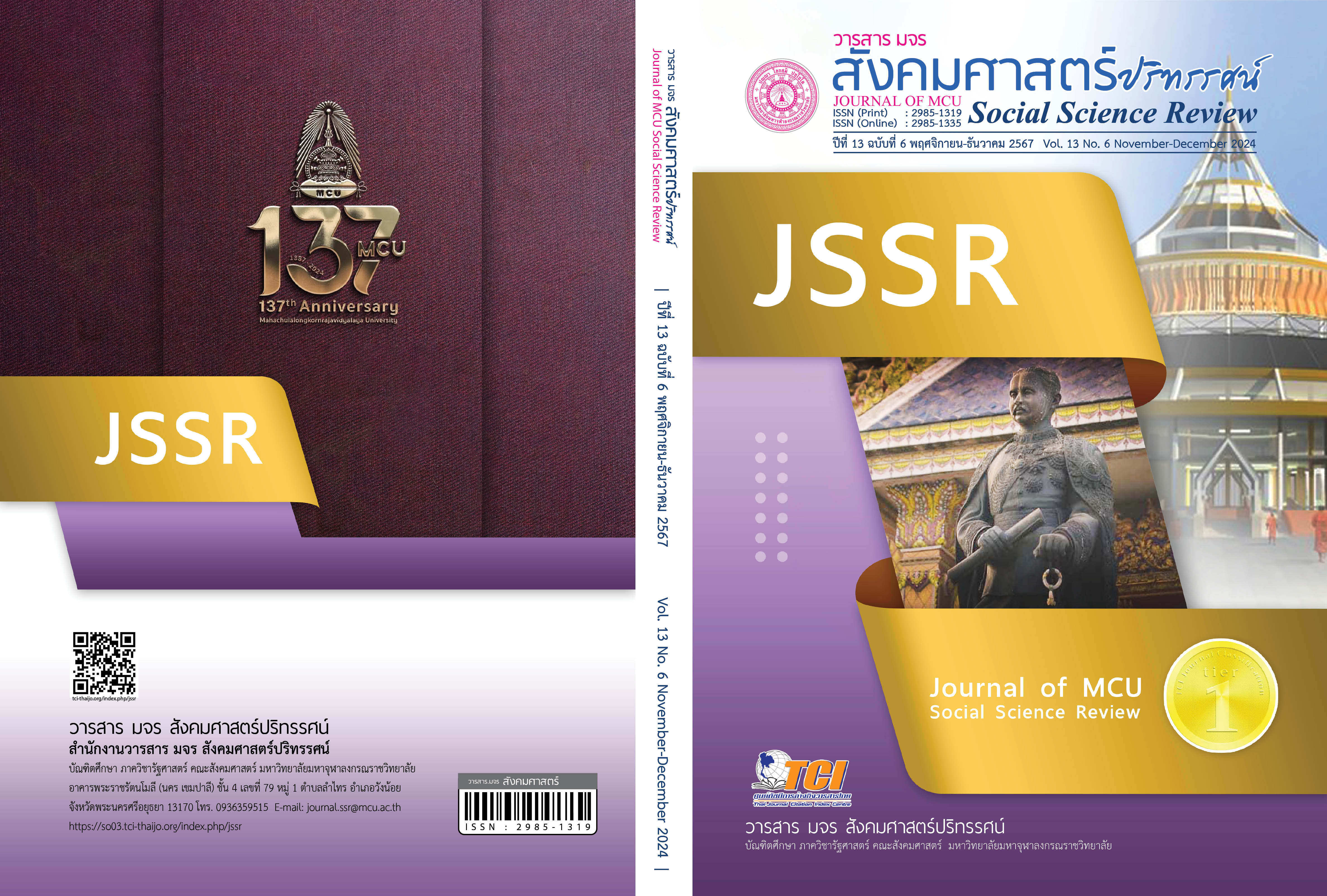MODEL OF PROPERTY MANAGEMENT OF MONASTERIES IN THAILAND
Keywords:
Model, Management, Property of MonasteriesAbstract
The objectives of this research article are1. To synthesize policies and strategies for the management of temple assets in Thailand. 2. To study the feasibility of establishing a Buddhist Asset Management Office in Thailand. 3. To develop the operating system of the temple asset database in Thailand. 4. To present the temple asset management model in Thailand. It is a combination of 4 types of research: Documentary Research, Quantitative Research, Qualitative Research, and Action Research.
The research findings were as follows: 1. Key policies for monastic property management included establishing measures for transparent financial recording and auditing, promoting community participation, using properties for the common good, establishing monastic committees to manage according to good governance principles, and developing personnel in management. There were eight important strategies. 2. There was feasibility to establish an Office of Buddhist Property Management in terms of legal aspects, administration, and cooperation with relevant agencies, which would help systematize and standardize the property management of monasteries. 3. The developed monastic property database system had three sub-modules with very good efficiency and the highest level of user satisfaction. 4. The model for property management of monasteries in Thailand should integrate Buddhist principles, ecclesiastical and civil laws, and modern management principles, with collaboration among the Sangha, government, and civil society, under clear guidelines for managing finances, land and buildings, religious assets, and income generation.
References
ณดา จันทร์สม. (2555). การบริหารการเงินของวัดในประเทศไทย (รายงานการวิจัย). กรุงเทพฯ: สถาบันบัณฑิตพัฒนบริหารศาสตร์.
พระครูสุนทรวัชรกิจ (บุญธรรม ธมฺมิโก). (2557). กลยุทธ์การจัดการทรัพยากรมนุษย์ของคณะสงฆ์จังหวัดเพชรบุรี (ดุษฎีนิพนธ์พุทธศาสตรดุษฎีบัณฑิต สาขาวิชาการจัดการเชิงพุทธ). พระนครศรีอยุธยา: มหาวิทยาลัยมหาจุฬาลงกรณราชวิทยาลัย.
พระมหาสุนันท์ สุนนฺโท. (2557). การพัฒนารูปแบบการจัดการศาสนสมบัติของวัดในจังหวัดพระนครศรีอยุธยา (ดุษฎีนิพนธ์พุทธศาสตรดุษฎีบัณฑิต สาขาวิชาการจัดการเชิงพุทธ). พระนครศรีอยุธยา: มหาวิทยาลัยมหาจุฬาลงกรณราชวิทยาลัย.
พีรณัฏฐ์ ยาทิพย์ และกรรณิการ์ จะกอ. (2554). การจัดทำบัญชีของพระอารามหลวงในเขตพื้นที่ปริมณฑลของกรุงเทพมหานคร (รายงานการวิจัย). นนทบุรี: มหาวิทยาลัยราชพฤกษ์.
สุขุมาลย์ ประสมศักดิ์. (2556). กลยุทธ์การมีส่วนร่วมของประชาชนในการจัดการสิ่งแวดล้อมตามหลักพุทธธรรมขององค์การบริหารส่วนจังหวัด ในกลุ่มจังหวัดภาคกลางตอนบน (ดุษฎีนิพนธ์พุทธศาสตรดุษฎีบัณฑิต สาขาวิชารัฐประศาสนศาสตร์). พระนครศรีอยุธยา: มหาวิทยาลัยมหาจุฬาลงกรณราชวิทยาลัย.
Downloads
Published
How to Cite
Issue
Section
License
Copyright (c) 2024 Journal of MCU Social Science Review

This work is licensed under a Creative Commons Attribution-NonCommercial-NoDerivatives 4.0 International License.
In order to conform the copyright law, all article authors must sign the consignment agreement to transfer the copyright to the Journal including the finally revised original articles. Besides, the article authors must declare that the articles will be printed in only the Journal of MCU Journal of Social Sciences. If there are pictures, tables or contents that were printed before, the article authors must receive permission from the authors in writing and show the evidence to the editor before the article is printed. If it does not conform to the set criteria, the editor will remove the article from the Journal without any exceptions.





